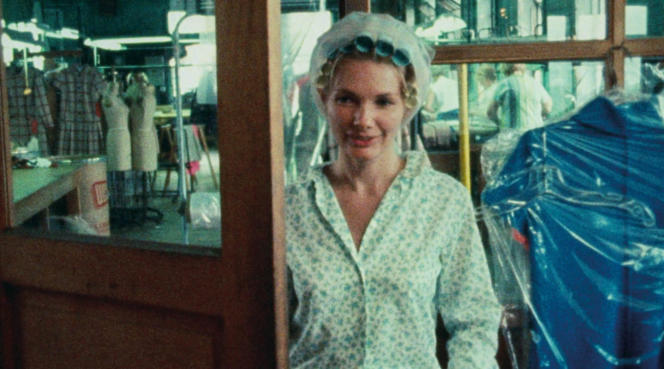Find all the episodes of the series “A film and then nothing” here.
If wanda (1970), by the American Barbara Loden (1932-1980), was a contemporary installation, it would be an artificial flame abused by a strong blower, flickering but never going out. Because this abrasive and cursed film, at least in the United States, is part of a cinephilic relay race, called never to stop, each and everyone passing on the torch.
Everything burns, in this first and only feature film which received the Pasinetti Prize for the best foreign film at the Venice Film Festival in 1970: propriety, domestic life, the love that one traditionally has for one’s loved ones, up to to the portrait of the blonde pin-up who sees herself destroyed in a comical and devastating shot – Wanda appearing in court in curlers. The director, who died of cancer at the age of 48, played the title role, as if Wanda, it was a little (a lot) her.
Born in North Carolina in a working-class background, Barbara Loden arrived in New York at the age of 17, posed for photo novels, danced in a club, played on Broadway, took part in television shows… She married a film producer and distributor, Jarry Joachim, with whom she has a first child. She will have a second with filmmaker Elia Kazan, whom she married in 1968 – but soon enough, the couple fell apart. The director ofEast of Eden (1955) gave him his first film role, in The Wild River (1960), then another, more ample, in The fever in the blood (1961).
“A Living Dead”
It was when she discovered a news item in the press that Barbara Loden had the idea of wanda : Alma Malone, divorced, lets herself be taken on by a petty gangster in the robbery of a bank. The day of her sentence by the court to twenty years in prison, she simply said thank you to the judges, as if she were relieved to no longer have to lead her boat. Or perhaps because she felt that the wind of freedom sold by society was artificial. This “thank you” greatly intrigued Barbara Loden, and, even if the filmmaker imagines a more open end for her character, he is stubbornly indifferent to his own fate and the mistreatment he suffers – which would make our era. The filmmaker took a few years to raise the funds to shoot this slow drift ($160,000 or $200,000, depending on the source) in a bluish grain, almost documentary.
The film opens with the crumpled heroine waking up after a night on a living room couch. She left her husband and children, and found refuge with a woman. The little ones are bawling, and the day promises to be the same for the mother at home: sandwiches, school, cleaning and all the rest. Wanda, she is expected in court (the famous scene with hair curlers), where she drags her feet. Judges and lawyers are getting impatient. The hearing has already begun with the husband’s testimony, when Wanda arrives, cigarette in mouth, barely glancing at her two little ones. “They will be better off with him”, she answers the judge who asks her if she accepts the divorce requested by her husband. The tone is dry, minimal, without pathos, and, for all these reasons, the scene still gives shivers today.
You have 44.75% of this article left to read. The following is for subscribers only.
